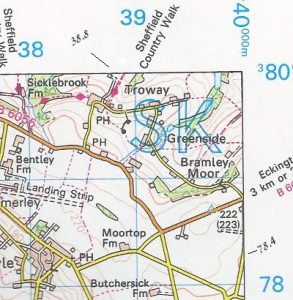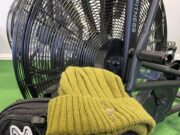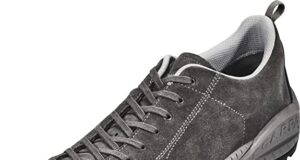So a map is a map right?
Wrong!
 – possibly the worlds cheesiest stock photo
– possibly the worlds cheesiest stock photo
There are a multitude of different maps all with different types and levels of information on them. So map selection is absolutely vital. You should consider whether topographical information is useful to you, how large an area you need to cover and the general level of detail you need. Over the years I have used air navigation maps, topographical maps and air photos/satellite images printed to scale.
In the UK we are very lucky in that we have the Ordnance Survey to produce mapping for us. OS mapping is quite simply the best that is available worldwide. I have never seen any mapping which comes close to giving the user as much information as OS maps do.

– old school air nav
Choosing a Map:
In the UK it is a given that we will use an OS map. But which one to use? This is entirely down to what you are planning to use it for. A 1:50k map will cover a wider area, but a 1:25k map will give you more detail. For my particular area of the UK I use a 1:25k map.
You can buy pre-made and folded maps but I tend to steer clear of them. Firstly, they may not cover the entirety of the area I am interested in. I don’t want to be having to carry 2 or more maps as this only confuses things. Secondly they are not waterproof. Yes, you can use a map case but this is very bulky and it’s a bloody nightmare when you need to re-fold it to the area you want. Because it is pre-creased you can’t use any plastic coverings to waterproof it as they wont stick. Finally, because they are a paper map you can’t mark them in any non-permanent way.

So here’s what I do. OS have a service on their website that lets you get a custom map centred wherever you like and printed flat with no folds. They cost £16.99 delivered. This is about a tenner more than one of the pre-made maps but it meets your exact needs so arguably will be of more use, especially if you are straddling 2 or more sheets.
Map preparation:
The first thing you are going to do is take a pair of scissors to it. There is tons of extra paper you just don’t need. The actual map is surrounded by a thick black line. Trim away anything outside of this square. Keep hold of the key, the magnetic data, map datum and the scale. Trim them down so you only have the information you need. Put them to one side for now.
Next, get hold of a highlighter in a nice bright colour which isn’t yellow or green as they will blend into the map. Now mark all the grid numbers. They are found all around the edge and throughout the map sheet itself. This will make it much easier to find them when you want to plot a grid reference.
 – eastings and northings on an OS map
– eastings and northings on an OS map
With this done we now need to gather up our map key, magnetic data, map datum and scale. This would also be a good opportunity to get any other data sheets which might be of use such as pace counts, compass variation in a vehicle or tables for things like call signs and radio frequency matrices or route cards. Clearly the amount of information you carry is entirely dependent on the permissiveness of your area of operations. I personally go for less being more and stick to just the off-cuts, adding anything else freehand if need be.
We are now ready to waterproof the first side of the map. I use clear sticky-back plastic for this. I like this because it makes the map waterproof, durable and means that I can mark my map with either chinagraph pencils, Lumicolours or Sharpies without being stuck with the results forever.
Lay out your sticky-black plastic on the floor so you can see the printed grid. Lay the map on top of it allowing a small margin around the edges. Mark your corners taking into account the margins and take the map away. Check over the plastic to make sure there are no blemishes, you might as well start with a nice smooth map. Trim up the plastic and let’s get ready to cover the map.
Now we turn back to our off cuts. Firstly take the magnetic data and write the year the map was produced on it nice and clearly. This will help you when you are changing grid bearings to magnetic bearings and vice versa. Next lay the map out face down on a flat, hard surface. Then lay out your off-cuts face up on the back of the map. Next get your pre-cut plastic and a soft cloth and slowly cover the map starting at one edge and making your way across. Wipe the cloth over the plastic as you go to ensure there are no air bubbles. Once you have done that trim off the excess plastic. Now repeat this process for the front of the map.
The final job is to fold the map:
The first thing you do is lay your map down on a flat surface.
Now fold the map from top to bottom, creasing it well in the centre.
When you unfold the map so that it is again flat, you should clearly see the centre crease.
Now fold the bottom half up to the centre crease
Now fold one half of the side, which you just folded to the centre crease, back on itself.
Next, you fold the last three layered fold under to the centre crease. This sounds more confusing than it is. You should now have four thicknesses of map, with three under the map.
Now do the same with the top half of the map, starting by folding the top down to the centre crease. Then follow the same procedure as used above.
When you are finished, the map should look like an accordion with all printed portions facing up.
Now fold the map in half so the short edges are touching.
Fold the map back on itself to the main crease on both sides so it is a nice compact size.
The final thing to do is to leave the folded map under something heavy for a few days to set the creases, otherwise it has a tendency to spring open at inopportune moments.
Other Options
If you are in the UK OS have the fantastic OS Maps service which, for an annual fee of less than £20, lets you print as much scale mapping as you like on your home printer. I use this regularly for day hikes or walking holidays. Couple a good quality printer with some waterproof paper, which can be easily bought from somewhere like Amazon, and you can carry a very detailed yet small waterproof map with you.
This Kit Pest Review article was written by Ben OToole. Hopefully you enjoyed it and if you have any thoughts or comments related to this article then leave a comment!
If you’d like to visit Cooper’s Kit Corner, you can find it here.
If you’d like to visit Gen Kit Exchange, you can find it here.













